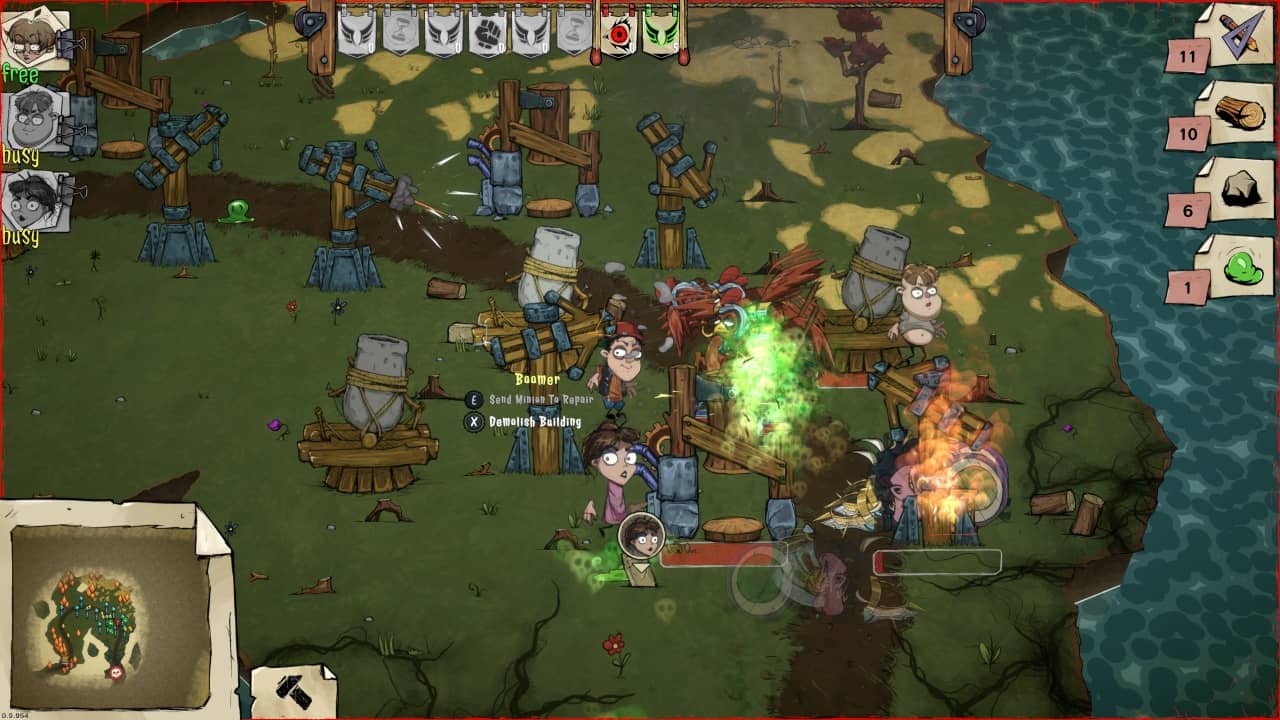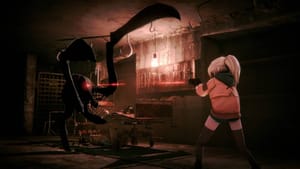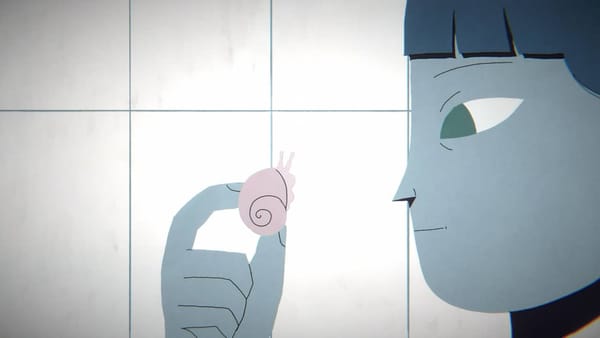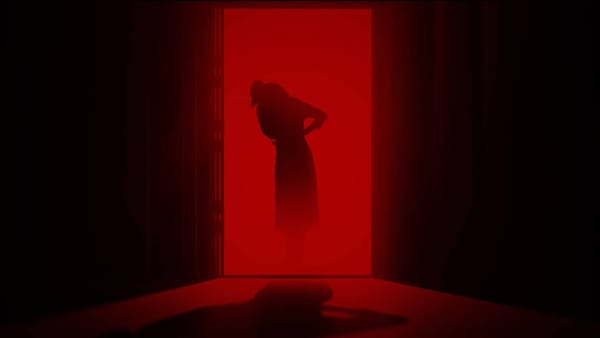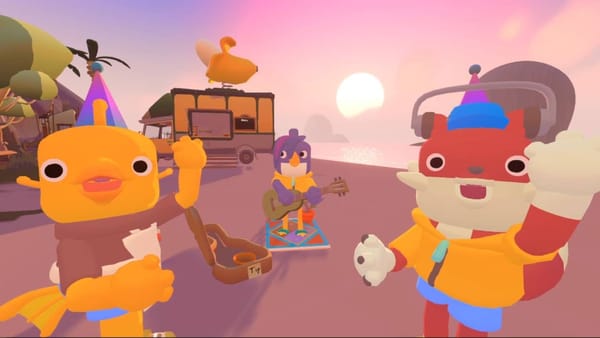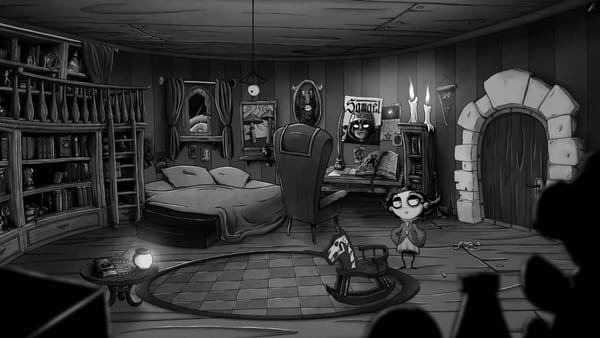More hands make light work is a lesson learned. A problem shared is a problem cared for. A lesson learned. Napoleon Bonaparte was intent on knocking out kids and destroying a travelling caravan – again, a lesson learned. In this case, it is a bit more relevant as that’s the name of this tower defence from Gaming Factory.
From the minds of developers MadGamesmith, you play schoolboy Frank, who appears to have been whisked away into a ToeJam & Earl-like world and has to fight historical figures and their bizarre legion of followers, typically in the shape of some sort of beast.
Whether there’s any truth to Frank’s ordeal remains to be seen, but let’s humour his imagination and help the fella out. He’ll appear on a path with an Howl’s Moving Castle-like base that requires enemy juices (not that kind of game) to propel forward to safety. Frank’s job is to build towers to thwart enemy invaders while the base makes tracks.
Obviously, you can’t build anything out of nothing, so you’ll have to source sticks and stones from the trees and rocks scattered throughout the levels. A quick chop or pick here and there, and you can then carry this back to your base and subsequently construct a tower. But here’s the first thing that is unique about Lesson Learned: you have mates to help you out.

Whether or not that’s real-life mates or not (you can play this as a co-op) is beside the point, as you now have a handful of people to share the load. Simply walk up to some of the resources and instruct your friend to chop away or collect, and everything will be automated, freeing up your hands to place some turrets and shoot some baddies.
Shooting enemies is also automated, what with Lesson Learned being a tower defense game and all. There are those default towers that consist of arrows and others that are cannon-based, as well as air turrets, teslas, and more. Each turret will have a set range and target ground-based or air-based enemies – sometimes both. Naturally, they can also be upgraded during a wave using slime or permanently upgraded by collecting artefacts and heading to a shop in between battles.
But get this, too: you can manually target enemies with a catapult. Like the Kingdom Rush series, Frank is a hero who can slow down enemies and occasionally cause damage. It is best played with a gamepad, though a mouse and keyboard also work; you’ll aim with a crosshair and fire the catapult to slow enemies down while the towers do their work. However, enemies will drop fire and poison-infused power-ups that do actual damage, albeit for a limited time.
At the end of each world, a real-life historical figure attacks (much like the bosses in other titles such as PixelJunk Monsters) and upon defeat, you’ll rescue one of your friends to help in the next biome. ‘Biome’ is quite loose as the worlds will refer to a historical period, but besides the change in characters, the levels look exactly the same.
Sure, the artwork in Lesson Learned is really cool, and there’s a variety in character design, but perhaps not in function. Ground enemies are typically easy to deal with, and aside from a few improvements in armour, air-based enemies don’t pose too much of a threat. However, there are some bruisers that’ll take down your turrets. Friends can repair damaged turrets, but only when there are no enemies nearby. When defending, your friends are useless and will run away.
I’d previously played Lesson Learned: Cult of the Elizabeth entirely on the Steam Deck, but this time around, I played on my laptop. In hindsight, the Steam Deck would have been better for the controls, or if I knew where my gamepad was, I should have played with that on the laptop, as the mouse and keyboard can be quite clunky. Bear that in mind when playing, as the controls can be tricky on that basis.
Tower defence titles, along with point and click games, are among my favourites, so it’s a no-brainer that Lesson Learned would appeal. There’s an element of arcade-like play, though it should appeal to both casuals and the more die-hard players, what with the difficulty levels. It is somewhat repetitive, and there’s no real break in gameplay or settings, though overall, it’s a unique experience and well worth a look.


